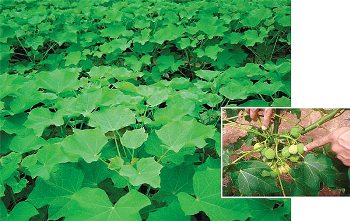Nov 15 2010
Thailand is preparing to utilize the jatropha seed based plants to develop biofuel on a large scale. Jatropha seed, otherwise known as sabudam in Thai language, has all the while been well known for its low yields and high labor costs while harvesting, thus not being commercially viable. But now with governmental focus shifting to jatropha from the normal palm oil, the jatropha is ready to be used for producing the much needed commodity, the biofuel.
Jatropha’s one unique advantage is that it is inedible, hence is unlike palm oil, an edible commodity, which is always being needed in the food industry. It takes three to four Kilograms of Jatropha seeds to make one liter of jatropha oil, while it takes four to six Kilograms of seeds to make one liter of palm oil. Further, Jatropha grows very quickly in a period of six months, while the palm tree takes four years to produce its first seeds. The Green Energy Group has revealed that Thailand would be one of the foremost exporters of jatropha in the next ten years.

A joint undertaking between a Belgian firm, Eurasia Consolidate and an Australian firm, Curcas Energy, is expected to promote the biofuel for biodiesel and aviation industries. They have been conducting trials for three years or more in Thailand, expending a combined amount of 150 million baht on research activities. Currently, a plan for oil production factories in Chiang Mai and Khon Kaen is being formulated. The company also wants to penetrate the jet fuel market. This is in accordance with IATA’s (International Air Transport Association) edict that civil aviation units should utilize 10% biofuel by the year 2017.
Agriculturists would be offered a price of four baht per kilogram which may even be increased to 5 or 5.50 baht, if the oil prices rise up, and stay around US$60 -70 for one barrel. Farmers who would deposit 50 satang, and pay 2-4 baht per seedling, would also be provided with seedlings. The company offers free of cost substitutes for a total 10% of the crop every year, to boost the yield of already existing cultivated areas.